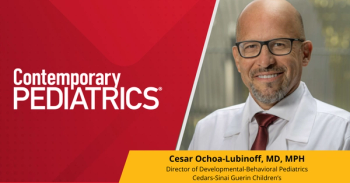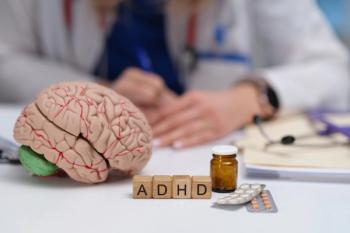
- Consultant for Pediatricians Vol 6 No 10
- Volume 6
- Issue 10
ADHD: More Prevalent Than We Thought?
There are frequently stories in the news and talk among the public of the over-diagnosis and treatment of attention deficit hyperactivity disorder (ADHD) in today's hypervigilant society. However, a study recently published in Archives of Pediatrics and Adolescent Medicine may serve to debunk this common belief.1
Are we under-diagnosing or over-diagnosing this common disorder?
There are frequently stories in the news and talk among the public of the over-diagnosis and treatment of attention deficit hyperactivity disorder (ADHD) in today's hypervigilant society. However, a study recently published in Archives of Pediatrics and Adolescent Medicine may serve to debunk this common belief.1
Other studies have looked at ADHD prevalence. Froehlich and colleagues1 set out to see:
- How many children in a national sample fit DSM-IV criteria for the disorder.
- How many met the criteria for the subtypes of ADHD.
- What proportion had received a diagnosis of ADHD and were being treated with medications.
Using the National Health and Nutrition Examination Survey from 2001 to 2004, the authors examined caregivers' responses pertaining to 3907 children aged 8 to 15 years. Of those who participated in the survey, 3082 completed the portions related to DSM-IV criteria for ADHD; 8.7% of these children met the criteria. Caregivers were asked whether their child had previously received a diagnosis of ADHD or had been treated with medications for the disorder.
Boys met the DSM-IV criteria for ADHD more often than girls. Also, non-Hispanic white children were affected more often than others. Children from the lowest income groups were more than twice as likely as children from the highest income groups to meet the criteria and also were more likely to fall into the hyperactive-impulsive subtype.
Interestingly, only 47.9% of the caregivers of children who met the DSM-IV criteria in the past year reported that the disorder had been diagnosed in their child. The diagnosis was more likely to have been made in boys, in older children, and in those with health insurance. Of the children who met the criteria for ADHD, 38.8% had received treatment with medication in the past year. Children from the lowest income group received less consistent treatment than those in higher income groups.
The authors point out that their study has limitations (eg, information was gathered only from caregivers). However, their findings do raise the possibility that ADHD may be more common than clinicians recognize. As such, we need to screen children for this disorder.
Some studies have shown a recent increase in the incidence of ADHD among girls.2 However, according to the Froehlich study, ADHD is diagnosed in only 33% of girls who meet DSM-IV criteria. We also cannot ignore the role that insurance and income have on diagnosis and successful treatment of the disorder.
Despite what we hear in the news, the Froehlich study indicates that we are under-diagnosing ADHD. We need to be on the lookout for children with this disorder, make an accurate diagnosis, and do our best to follow affected children closely.
References:
REFERENCES:
1.
Froehlich TE, Lanphear BP, Epstein JN, et al. Prevalence, recognition, and treatment of attention-deficit/hyperactivity disorder in a national sample of US children.
Arch Pediatr Adolesc Med
. 2007;161:857-864.
2.
Robison LM, Skaer TL, Sclar DA, Galin RS. Is attention deficit hyperactivity disorder increasing among girls in the US? Trends in diagnosis and the prescribing of stimulants
.
CNS Drugs
. 2002;16:129-137.
Articles in this issue
about 18 years ago
Varicellaabout 18 years ago
Bell Palsy From Lyme Meningitisabout 18 years ago
Coronal Hypospadiasabout 18 years ago
Chronic Recurrent Multifocal Osteomyelitis: REFERENCES:about 18 years ago
Vaccine-Associated Herpes Zosterabout 18 years ago
Incontinentia Pigmenti and Hypomelanosis of Itoabout 18 years ago
Geographic Tongueabout 18 years ago
Green-Colored StoolNewsletter
Access practical, evidence-based guidance to support better care for our youngest patients. Join our email list for the latest clinical updates.








